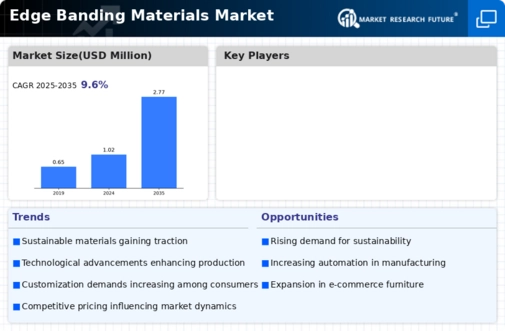Market Analysis
In-depth Analysis of Edge Banding Materials Market Industry Landscape
Growing trends in the furniture business have changed the way edge banding materials are used around the world. Edge banding is made up of strips that are attached to rough-cut boards, like those used in kitchen cabinets and other furniture projects. The strips give the boards a smooth finish and make them look nice. People want customized, beautiful furniture more and more, so quality is important when picking an edge-banding material that will last and give you design options. You can get this material from a number of different places.
Changes in design tastes and improvements in manufacturing technologies have a big impact on the edge bandings markets. Because of the popularity of modern, unique furniture designs, edge bandings are made from a variety of woods that can look like different types of wood, such as solid colors or shiny finishes. The industry offers a range of alternatives, such as PVCs, ABSs, wood veneers, acrylics, and more. This gives designers and manufacturers a choice of styles to suit different tastes.
Furthermore, the edge banding materials market has a strong link with the construction industry. Edge-banding is widely used in its production of cabinetry, countertops, and architectural elements where exposed edges require protection and a decorative finish. As the construction sector experiences growth in both residential and commercial projects, the demand for edge banding materials in applications such as kitchen cabinets, closets, and office furniture contributes to the expansion of the market.
The dynamics of edge banding materials are also influenced by sustainability considerations. Manufacturers and consumers are moving toward eco-friendly and recyclable edgeband alternatives due to increased environmental consciousness during material selection. In addition to this, there is a tendency to use recycled content or bio-based material which carries an eco-certification which fits within the global trend towards sustainable manufacturing practices.
However, the edge banding market is challenging in terms of price pressure, competition from substitution products and need for product innovation. The industry has a cost quality dilemma when it comes to purchasing high-quality and visually appealing edge banding materials. In addition, solid wood edgebandings and veneers have become some of the alternative materials that are being used by manufacturers as they need to differentiate their products with each other through innovation, quality and design flexibility.



Leave a Comment